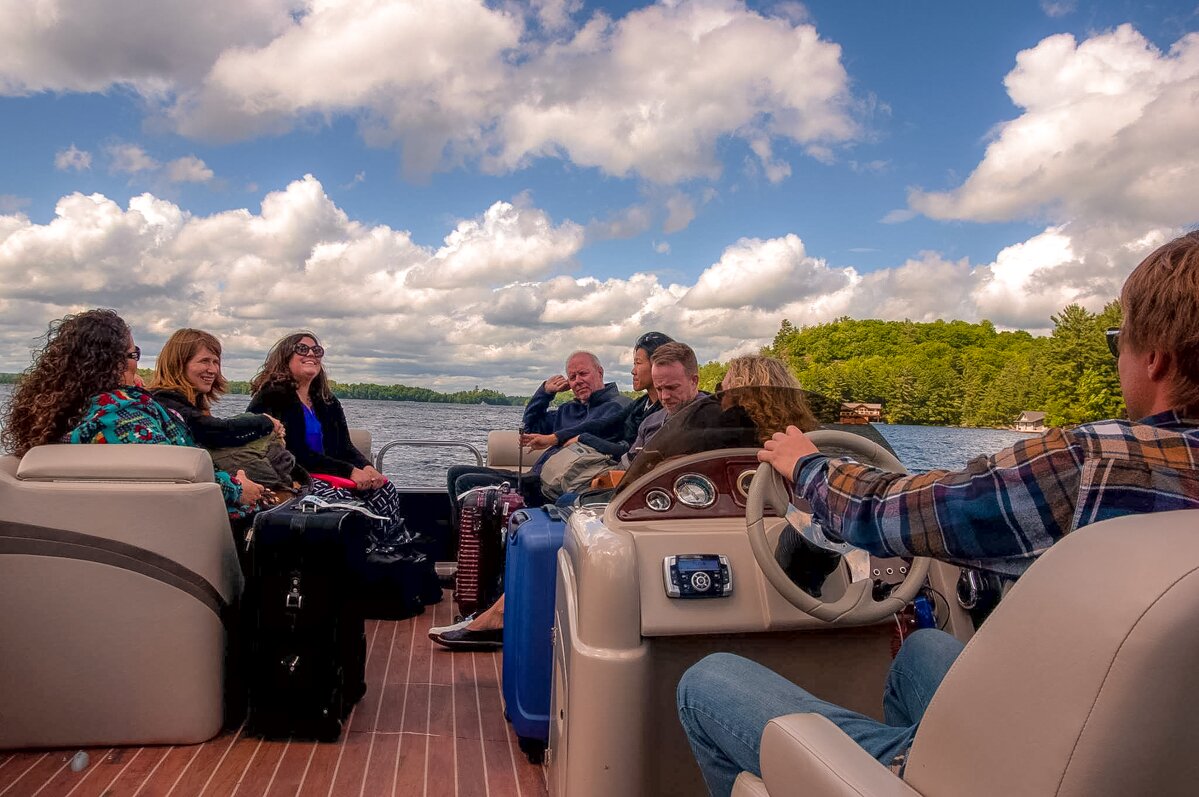How can journalism support reconciliation with Indigenous peoples?

What is journalism doing to carry out reconciliation with Indigenous peoples? This was the question I was invited to ponder earlier this month at “Reconciliation Journalism,” a conference sponsored and hosted by the J.W. McConnell Family Foundation on Wasan Island, Ont.
But what are Indigenous people doing to understand journalism?
That is my overriding thought after attending. The small conference brought together journalists, academics and community activists to discuss and define reconciliation journalism.
I likened some of the exercises participants did to turning a mirror — reconciliation — around to face ourselves. Looking into the reflection, we’re actually looking into our souls and asking, “What do we want to be as a country?”
I have to admit, I’d not thought of reconciliation journalism before. I’d thought about reconciliation, and about journalism, but never the two as a hybrid.
When I think about reconciliation, I think back to this time last year when now-Senator Murray Sinclair released the 94 recommendations in the Truth and Reconciliation Commission (TRC) final report. It’s the only time in my life when I saw places and people come to a complete standstill as the event unfolded, denoting a historical moment but also the weight that rested with it.
I also saw that the backdrop of the recommendations includes spiralling education, employment, mortality, addiction, child apprehension, suicide, language retention and incarceration statistics. These numbers aren’t improving, they’re worsening. It was against this backdrop that the TRC calls to action represented hope, maybe the best of hopes and maybe the last. To not act on or to not perform journalism in the service of this is to take away people’s hope when that’s all they have left. This is a moment in history that we can’t let pass.
Three of the calls to action, 84, 85 and 86, concerned journalism. Yet there was no parallel recommendation for Indigenous leaders to learn about journalism, its role in a democracy, or about journalists and what they do. I’m convinced that if this isn’t shored up then it will cause the public’s understanding of reconciliation to be skewed at best or stalled at worst. Journalism is the portal through which the public sees and understands reconciliation. But if journalists can’t get unfettered access to First Nations communities then that portal will either close or turn into a void that can be filled with anything, and our moment will be lost.
I witnessed conference participants struggle to define reconciliation journalism. I wouldn’t say we arrived at a concrete definition, but a lot of ideas surfaced. We know and understand reconciliation. But I think this is the first time we have tried to strain it through a journalism colander, or fashion a colander to accommodate it. For my part, when thinking about a definition, I hearkened back to the canons of journalism, specifically one — journalism as a public service. Journalism has an obligation to public life, I once learned — an obligation that is deeper than just telling stories. Public service journalism impacts public life. Thinking of it this way, my working definition of reconciliation journalism is journalism in the service of reconciliation.
I was pleased to see conference participants struggle for a definition because it meant that, at least here, people are thinking and doing something about it; they’re working with it. Who else in mainstream media can say they are doing the same? I was still left wondering, though, how are First Nations working to understand journalism and work with journalists?
A key moment from the retreat that stands out to me was when we were asked to reflect on the work of Ian Mosby, whose research uncovered nutritional experiments performed on students in residential schools in the 1940s and 1950s. One of those residential schools is located in my hometown of Port Alberni. My parents both went to the school, and cousins of mine were part of the experiments. I reported on the story both when it broke and when Mosby released his findings to residential school survivors in Port Alberni in 2013. I interviewed two men who were part of the experiment, and recounted a story about when a black-and-white picture of a classroom of kids in the residential school during that time flashed on the wall during Mosby’s PowerPoint presentation. Some audience members were in that picture as children, and the silence for a few moments afterward was surreal. That moment, and listening to the stories of two survivors, I told participants, will be with me for all of my days.

The conference wasn’t without its challenges. The lack of Indigenous journalists was noticeable.
APTN’s Naomi Clarke, David Moses and I were the only Indigenous journalists at the conference. Of them, I was the only practicing journalist. I thought it unusual that there weren’t more. Space, timing and logistics likely played a role in why. Having said this, there needs to be more of these sessions with more Indigenous journalists. They’re out there, and they have insight, perspectives and ideas that need to be included, especially during the formative stages of this concept of reconciliation journalism.
The last challenge is a challenge to ourselves — to not let this wither away. To not relegate it to just another conference whose pamphlet is tucked away on a shelf, whose ideas are not thought about again, and whose momentum crests like a wave. To borrow journalistic phrases from newsrooms I’ve worked in: What’s next? How has this advanced? What’s the conversation we want to have? Why should we care? These things fall to us now to carry on.
